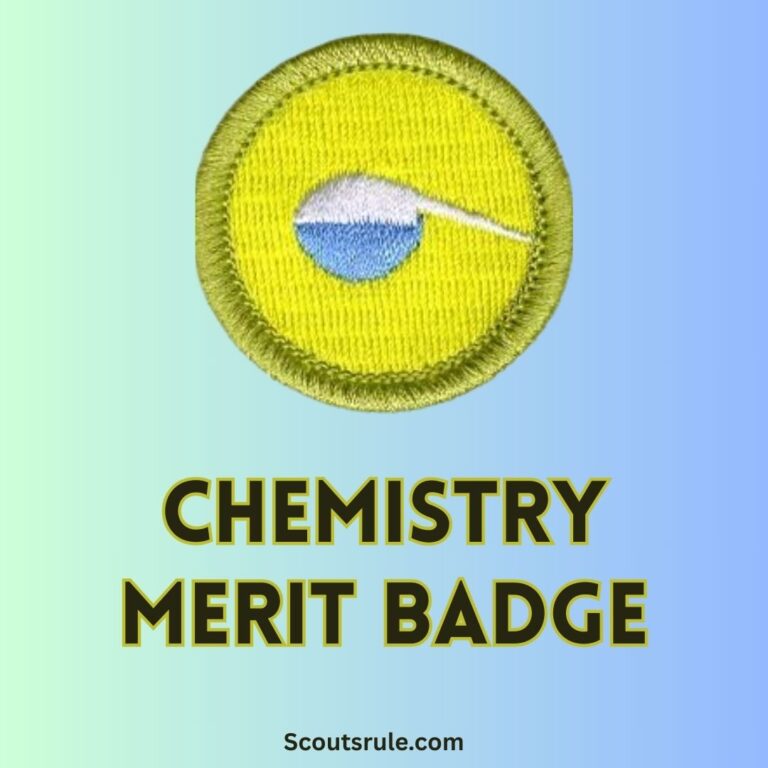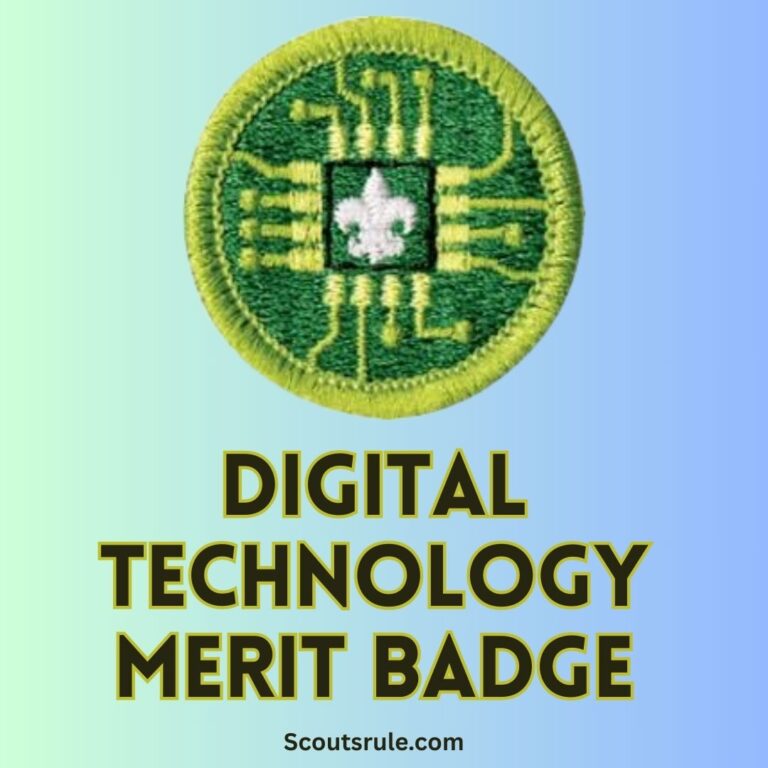
From the earliest dreams of human flight to today’s technologically advanced airliners and fighter jets, aviation captures the imagination and stands as a testament to human ingenuity. The Aviation Merit Badge, offered by the Boy Scouts of America, challenges Scouts to delve into every aspect of flight—from history and theory and science to the practical skills essential for keeping our skies safe. In this guide, we examine the evolution of flight, define what an “aircraft” is by describing its many modern forms, study engine operations and aerodynamic forces, and detail the active, hands‑on requirements that will prepare you for a future of discovery and possibly a career in aviation.
Post Contents
- 1. The Evolution and History of Flight
- 2. Defining the Term “Aircraft”
- 3. Engine Operations: Piston, Turboprop, and Jet Engines
- 4. The Aerodynamic Forces of Flight
- 5. Flight Maneuvers, Simulator Practice, and Hands‑On Experience
- 6. Building and Flying Models (Optional Hands‑On Project)
- 7. Careers in Aviation and the Importance of Safety
- 8. Reflecting on Your Flight Journey
- 9. Bringing It All Together: Your Aviation Journey
- 10. Final Thoughts: Soaring Into Your Future
1. The Evolution and History of Flight
A Brief History
For centuries, humankind has yearned to fly. The myth of Icarus, Leonardo da Vinci’s flying machines, and numerous experimental contraptions all reveal our long-standing fascination with the skies. Yet it was not until the early 20th century that this dream became reality. Consider these notable milestones:
- The Wright Brothers and the First Powered Flight (1903): In December 1903, the Wright Flyer achieved the first controlled, powered flight. This breakthrough, lasting just seconds, proved that heavier-than-air flight was possible and laid the groundwork for modern aviation.
- Advances Through the World Wars (1914–1945): Both World War I and World War II were catalysts for aviation innovation. During these conflicts, aircraft evolved from relatively simple reconnaissance machines to high‑performance fighters and bombers. These developments not only influenced military strategy but also advanced commercial aviation technologies in the postwar years.
- The Jet Age and Beyond (1950s–Today): The introduction of jet engines in the 1940s and 1950s revolutionized aviation. Jet aircraft, with the power to fly faster, higher, and more efficiently than propeller‐driven planes, paved the way for the global commercial airliner industry and the rapid economic expansion of international travel. Today, modern aviation includes an astonishing range — from sport and recreational flying to unmanned aerial vehicles (drones) and even spacecraft.
Understanding this history gives you insight into the rapid pace of technological advancement that defines the field and helps appreciate the practical applications and safety innovations you’ll study throughout the badge requirements.
2. Defining the Term “Aircraft”
What Is an Aircraft?
One of the first tasks in the Aviation Merit Badge is to define “aircraft.” In its broadest sense, an aircraft is any vehicle designed to travel through the air by generating lift. This definition encompasses a wide array of vehicles, from traditional airplanes to helicopters, gliders, balloons, and modern drones.
Types of Aircraft and Their Typical Uses
To meet the requirements, you are expected to describe at least three kinds of aircraft used today. Let’s look at three primary categories:
- Fixed‑Wing Airplanes: These are the workhorses of aviation. Fixed‑wing aircraft have rigid wings that generate lift as the vehicle moves forward. They vary widely in size and use—from small single‑engine trainers for flight instruction and recreational flying to large commercial airliners that transport thousands of passengers across continents. Fixed‑wing airplanes are prized for their efficiency in covering long distances at relatively low operating costs.
- Rotary‑Wing Aircraft (Helicopters): Unlike fixed‑wing airplanes, helicopters produce lift through rotating blades (rotors) and have the unique ability to take off and land vertically. This makes them indispensable for search and rescue operations, medical evacuations, and tasks in rugged or confined areas where runways are unavailable. Their versatility is a key factor in both military and civilian applications.
- Jet Aircraft: Powered by turbojet, turbofan, or turboprop engines, jet aircraft are designed for high‑speed, long‑distance travel. They are the mainstay of the commercial airline industry and play critical roles in military operations. With advanced aerodynamics and engine technologies, these aircraft operate at high altitudes and speeds, providing efficient global connectivity.
By understanding the differences and practical applications of these types, you build a solid foundation for the later parts of the badge that delve into engine operation and flight dynamics.
3. Engine Operations: Piston, Turboprop, and Jet Engines
Aviation isn’t just about the airframe; it’s also about the engines that power them. The Aviation Merit Badge requires you to explain how various engine types work. Let’s explore the three main engine categories encountered in aviation today.
Piston Engines
Piston or reciprocating engines are among the oldest types used in aviation. They work on principles similar to those in many automobiles:
- Operation: A controlled explosion of a fuel-air mixture in a cylinder drives a piston up and down. This reciprocating motion is transferred via a crankshaft to produce rotational energy.
- Applications: Piston engines are typically found in light, general aviation aircraft used for training or recreational flying. Their relatively simple design, ease of maintenance, and cost-effectiveness make them ideal for smaller aircraft.
Turboprop Engines
Turboprop engines combine aspects of turbine technology with the propeller system:
- Operation: A gas turbine engine drives a propeller through a reduction gearbox. This method harnesses the high‑speed exhaust of a turbine while maintaining efficient propulsion at lower speeds.
- Applications: Turboprops are used in regional commuter aircraft and some military transport applications. They strike a balance between power and fuel efficiency, performing well on shorter runways and regional routes.
Jet Engines
Jet engines represent the pinnacle of modern propulsion:
- Operation: In jet engines, air is compressed and mixed with fuel, then ignited. The resulting high‑pressure, high‑temperature gases are expelled at high speed through a nozzle, generating thrust via Newton’s third law. Variations include turbojets, turbofans, and ramjets.
- Applications: Found in high‑speed military fighters and commercial airliners, jet engines are capable of propelling aircraft to speeds and altitudes unattainable by piston or turboprop systems. Their development heralded the Jet Age, forever altering the landscape of global travel.
Explaining these engine types reinforces your understanding of how airplanes generate the power required to overcome gravity and drag, and it lays the groundwork for further study of aerodynamic forces.
4. The Aerodynamic Forces of Flight
The Four Essential Forces
Understanding the forces that act on an aircraft is crucial for grasping the mechanics of flight. In every flight, four main forces interact:
- Lift: Generated by the aircraft’s wings (or airfoil), lift pushes the vehicle upward to overcome its weight. The shape and angle of the wing create different pressure zones, causing air to move faster over the top surface, reducing pressure, and lifting the wing upward.
- Weight: The gravitational pull on the aircraft’s mass. For stable flight, lift must counteract weight; balancing these forces is essential during all flight operations.
- Thrust: Produced by the engines, thrust propels the aircraft forward. Whether from a propeller’s rotation or the high‑speed jet exhaust, thrust acts to overcome drag and maintain necessary speed for lift generation.
- Drag: The aerodynamic resistance that opposes the aircraft’s motion through the air. Streamlining and aerodynamic design are key to reducing drag and ensuring efficient flight.
The Role of Control Surfaces
Control surfaces allow pilots to manage these forces, ensuring stable and controlled flight. They include:
- Ailerons: Located on the trailing edge of each wing, ailerons control the roll (banking) of the aircraft.
- Elevators: Mounted on the horizontal stabilizer, these surfaces manage the pitch — raising or lowering the nose.
- Rudder: Attached to the vertical stabilizer, the rudder controls yaw, helping the aircraft turn left or right.
Together, these control surfaces permit precise manipulation of the airplane’s attitude during takeoff, climb, turns, descent, and landing.
5. Flight Maneuvers, Simulator Practice, and Hands‑On Experience
Flight Maneuvers
Aviation is both scientific and experiential. One key component of the merit badge is both learning and demonstrating various flight maneuvers. You should be prepared to explain and, when possible, demonstrate maneuvers such as:
- Takeoff: Discuss how the combination of engine thrust and control surface adjustment creates enough lift for the aircraft to leave the ground.
- Straight Climb: Maintaining a stable pitch and power setting to climb steadily.
- Level Turn and Coordinated Bank: Showing how the use of ailerons and rudder correctly counteract the effects of gravity and centrifugal force.
- Climbing and Descending Turns: Balancing adjustments to altitude with turning motion.
- Straight Descent and Landing: Explaining how to reduce speed, lower the aircraft safely, and manage the descent profile accurately.
Using Flight Simulator Software
Modern flight simulators offer a risk‑free environment to practice these maneuvers. In your Aviation Merit Badge work you may be required to:
- Plot a course using an aeronautical chart.
- Establish headings, correct for magnetic variation, compass deviation, and wind drift.
- “Fly” the course on a simulator to demonstrate takeoff, a steady climb, controlled turns, and a safe landing.
Simulators reinforce theoretical knowledge with realistic practice and help build familiarity with the cockpit instruments and the subtle dynamics of flight.
Pre‑Flight Inspections and Real‑World Exposure
Another important hands‑on activity is performing a pre‑flight inspection of a light airplane under supervision. Here, you will be expected to:
- Conduct an exterior inspection of the aircraft (checking the condition of the fuselage, wings, control surfaces, and landing gear).
- Verify the interior cockpit instruments and systems to ensure proper operation.
- Discuss why each step is critical for safety.
In addition to pre‑flight inspections, you may be required to visit an airport. During your visit, observe the operations of air traffic control, watch aircraft taking off and landing, and ask questions to pilots or ground crew to deepen your understanding of operational protocols.
6. Building and Flying Models (Optional Hands‑On Project)
For Scouts who enjoy constructing and handling models, some versions of the badge allow you to extend your learning by building and flying a model airplane. Whether you choose a fuel‑driven model or one powered by batteries, you will be guided to:
- Follow detailed construction plans that emphasize safety (e.g., correct use of glue, paint, and, if applicable, fuel).
- Demonstrate an understanding of aerodynamic principles by ensuring that your model exhibits proper balance, stability, and lift.
- Safely operate your model in a designated area, clearly explaining the safety rules that govern model airplane construction and flight.
This project not only reinforces the technical and scientific concepts you’ve learned but also introduces you to aspects of engineering, fabrication, and practical problem‑solving.
7. Careers in Aviation and the Importance of Safety
Professional Pathways
While earning the Aviation Merit Badge is primarily an educational experience, it also opens your eyes to the many career paths within aviation. Consider exploring:
- Pilot Certifications: Understanding the differences between sport, recreational, and private pilot certificates along with instrument ratings.
- Aircraft Maintenance and Engineering: Learning about the vital roles of mechanics and engineers in keeping the aviation industry safe and innovative.
- Air Traffic Control and Aviation Management: Appreciating how coordination on the ground keeps bustling airports and busy airways operating smoothly.
By studying these professional fields, you not only complete the merit badge requirements but also gain insight into potential careers that might one day become your own.
The Crucial Role of Safety
Aviation is characterized by its rigorous commitment to safety. The Aviation Merit Badge stresses that every check, every maintenance procedure, and every simulation is designed to minimize risk. Demonstrating a meticulous approach to safety—from using pre‑flight checklists to following strict protocols in both real and simulated flight—will instill disciplined habits that are essential for any future aviator.
8. Reflecting on Your Flight Journey
As you work through the Aviation Merit Badge requirements, reflection is just as important as technical mastery. Ask yourself:
- What surprised you most about the physics of flight?
- How has understanding the history of aviation deepened your appreciation for modern aircraft?
- In what ways has your hands‑on experience (through pre‑flight inspections, simulator sessions, or model projects) enhanced your technical skills and sense of responsibility?
- What aspects of aviation safety will you carry forward into any future aviation endeavors?
Record your reflections in your merit badge workbook, and be prepared to discuss them with your merit badge counselor. Your insights will not only help you pass the badge requirements but also foster a mindset of lifelong learning and safety awareness.
9. Bringing It All Together: Your Aviation Journey
Earning the Aviation Merit Badge is much more than checking boxes on a list. It is a transformative educational process that:
- Connects you to the rich history of flight and the evolution of technology from the Wright Brothers to modern digital simulators.
- Equips you with the technical knowledge needed to understand the fundamental forces acting on an aircraft—the interplay of lift, weight, thrust, and drag.
- Introduces you to the intricate mechanics of diverse engine systems, such as piston engines, turboprops, and jets.
- Provides hands‑on experience with flight maneuvers via simulators and pre‑flight inspections that mirror the real practices of pilots and aviation professionals.
- Offers insights into the stringent safety protocols that make aviation one of the world’s safest forms of travel.
- Opens up horizons to various aviation-related careers, inspiring you to consider the many ways you might someday contribute to this dynamic industry.
Your journey toward mastering aviation is both challenging and deeply rewarding. Every flight simulation, every pre‑flight check, and every discussion with experts contributes to a broader understanding of the science and art of flying. The discipline required in aviation—attention to detail, respect for protocols, and continuous learning—is a quality that will benefit you not only in your Scouting career but in every aspect of your life.
10. Final Thoughts: Soaring Into Your Future
As you complete the Aviation Merit Badge requirements, allow yourself to be inspired by the vast world of flight. The principles you learn—about aerodynamics, engine operations, control surfaces, and safety—are cornerstones not just for becoming a pilot but for cultivating a spirit of curiosity and excellence in any field.
Remember:
- Flight Is a Team Effort: From ground crews performing meticulous maintenance to air traffic controllers managing the busy skies, every role in aviation is interdependent. This teaches the value of teamwork and the importance of every detail in achieving a common goal.
- Safety and Preparation Are Paramount: The rigorous standards of pre‑flight inspections and simulator training instill habits that keep everyone safe—habits that, when adopted early, become second nature regardless of where you go.
- Your Journey Is Ongoing: The Aviation Merit Badge is an introduction to a world brimming with innovation, responsibility, and endless possibility. The skills and knowledge you acquire here will serve as a firm foundation for any future endeavors in aviation, engineering, or beyond.
May your interest in aviation continue to soar as high as the aircraft you study. Whether you end up behind the controls of a small Piper plane, working as part of an airport management team, or exploring the possibilities of unmanned aerial systems and space flight, the lessons learned through this badge will always guide you toward safe, informed, and innovative action.
Embrace your journey, ask questions, seek out experts, and remember that the sky is not the limit—it is only the beginning.

Hi, Robin here, A former lead Scout and here I share my inspiring stories about USA Scouts, leadership, adventure, how to guides and more.






